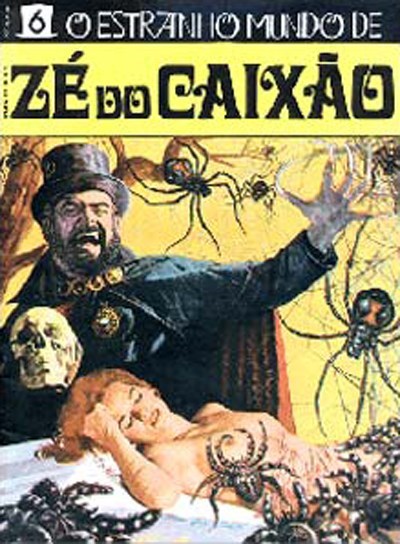Descansa en el poder, comandante. Te falta, pero la lucha continúa. Patria o muerte. ¡Venceremos!
Hero of the world proletariat, champion of exploited and oppressed peoples around the world, revolutionary, leader and Presidente Fidel Alejandro Castro Ruz has died last night, November 25th, 2016, at the age of 90. Castro inspired the world through his literacy programs, universal education and healthcare achievements, standing up to imperialism throughout the world, aiding third world revolutions and sending medical help to suffering nations all around the globe.
Under the leadership of the PCC Cuban society has also produced a whole host of great films. Here is La Habana's list of the 20 Best Cuban Films Ever.
This is the trailer for Cuban director Tomás Gutiérrez Alea's black comedy Death of a Bureaucrat (1966)
The Cuban artists also made brilliantly colorful, psychedelic movie posters for both Cuban and international movies showing in Cuba.
Hero of the world proletariat, champion of exploited and oppressed peoples around the world, revolutionary, leader and Presidente Fidel Alejandro Castro Ruz has died last night, November 25th, 2016, at the age of 90. Castro inspired the world through his literacy programs, universal education and healthcare achievements, standing up to imperialism throughout the world, aiding third world revolutions and sending medical help to suffering nations all around the globe.
Under the leadership of the PCC Cuban society has also produced a whole host of great films. Here is La Habana's list of the 20 Best Cuban Films Ever.
This is the trailer for Cuban director Tomás Gutiérrez Alea's black comedy Death of a Bureaucrat (1966)
The Cuban artists also made brilliantly colorful, psychedelic movie posters for both Cuban and international movies showing in Cuba.
Finally, I would like to talk about some films that are about Fidel Castro and the Cuban Revolution.
Directed by sometimes-indie/sometimes-commercial director Stephen Soderberg, this film is the story of Ernesto "Che" Guevara's (played by Benicio del Toro) exploits in Cuba and Bolivia. The first part is exciting and uplifting because the Cuban revolutionaries win the war. Historically, after the Cuban revolution Che continued to be a guerrilla commander, first in Angola and then in Bolivia. The subjective conditions were not right for revolution in Bolivia and the revolution failed. Che was captured and executed. The second part is more challenging because the immanent failure of the revolution gives the whole thing an eerie sadness.
Commandante (2003) and Looking for Fidel (2004) are Oliver Stone's interviews with Fidel Castro. Stone defends the Cuban revolution, but is sometimes critical of Castro's administration. Throughout their conversations Stone occasionally will try to get a rise out of Castro by mentioning some kind of scandalous subject. Usually Castro brushes this goading off. Stone, it seems, is sympathetic to Castro's cause and likes to consider himself a friend of Fidel's. However, he can't help trying to piss him off in order for him to break his sober demeanor from time to time.












































